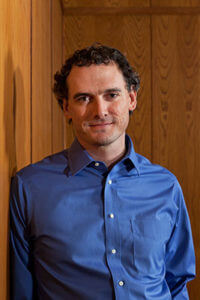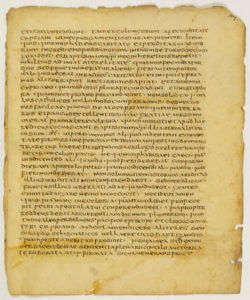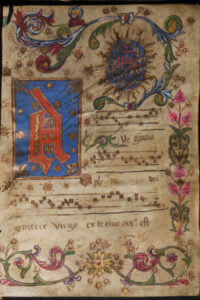August 10, 2016
Jubilees Palimpsest Project uses new technology to explore old manuscripts

Todd Hanneken, Ph.D., is like Indiana Jones, only his quests happen within centuries-old artifacts instead of in pursuit of them.
St. Mary’s University was awarded a $325,000 grant this week from the National Endowment for the Humanities to fund the Associate Professor of Theology’s work revealing hidden words within biblical literature. It’s called the Jubilees Palimpsest Project.
Hanneken is the first scholar to use Spectral RTI (Reflectance Transformation Imaging) to excavate text from ancient books and manuscripts. These artifacts, called palimpsests, haven’t been legible for centuries – because they were erased.
Long ago, paper was hard to come by, so writing often was erased from valuable parchment so it could be reused. What was viewed as heresy often was deleted. For example, the Book of Jubilees was written in Hebrew in the 150s B.C. and was authoritative among the Dead Sea Scrolls, but it was cast aside by Judaism and Christianity, Hanneken said. There is much society can learn from restoring this lost literature.

“This grant will expand opportunities for our students to work at the forefront of innovations in the study of ancient Judaism and Christianity,” Hanneken said. “I fully expect this grant project – and other projects using the technology we are developing – will lead to deeper understanding of the historical foundations of Christianity.”
How does it work? Spectral imaging uses ultraviolet and infrared wavelengths to reveal colors the human eye can’t detect, and RTI picks up the corrosion of parchment where acidic ink once had been. Combine the two technologies and – voila! – what once was lost now is found. We were blind, but now we see.
“Suddenly the tens of thousands of palimpsests already in libraries and museums are like caves in the desert with lost texts just below the surface,” Hanneken said.
Hanneken invented the technology at St. Mary’s in 2012 and now coordinates a team of 21 archaeologists, theology scholars and imaging experts from institutions around the U.S. Student researchers from St. Mary’s assist with the project, which is also sponsored by the Edward and Linda Speed Endowment for Faculty Development and Research.
The team focuses on the Jubilees Palimpsest, a fifth-century erased Latin manuscript containing ancient books excluded from the Bible:
- The Book of Jubilees, originally written in the second century B.C., is Moses’ retelling of Genesis and Exodus as a legal narrative. It further describes creation and descendants of Adam and Eve.
- The Testament of Moses is a Jewish text from around the time of Jesus that describes a messianic figure other than Jesus.
- The Arian Commentary on the Gospel of Luke, written in the fourth century A.D., reflects the ideas of the followers of Arius, who were deemed heretics because they considered God the Son to be subordinate to God the Father.
Each was erased and an anthology of the writings of Augustine was written on the parchment. The palimpsest itself has been at the Biblioteca Ambrosiana in Milan since the 17th century.

The grant allows St. Mary’s faculty and students, as well as colleagues from the Early Manuscripts Electronic Library and the Rochester Institute of Technology, to visit Milan to analyze this palimpsest. Interactive images will be published online for public use, with research led by scholars from St. Mary’s, the University of Notre Dame and the University of Pennsylvania. Grant funds also allow St. Mary’s faculty and students to teach other scholars and curators to use the technology in the future.
Funding is still being sought for the next steps in the project, which include a multi-institution effort to create a permanent center for digital archaeology.
The project supports the mission of St. Mary’s University in leading internationally recognized scholarly excellence in the study of the Catholic intellectual tradition. The grant extends opportunities to St. Mary’s students to work alongside leading experts in building the tools that will help define the future of digital humanities research.
About the National Endowment for the Humanities
Created in 1965 as an independent federal agency, the National Endowment for the Humanities supports research and learning in history, literature, philosophy, and other areas of the humanities by funding selected, peer-reviewed proposals from around the nation. Additional information about the National Endowment for the Humanities and its grant programs is available at www.neh.gov.
